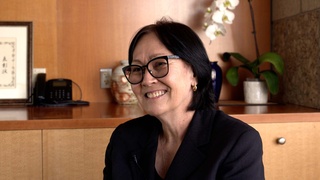Interviews
Meeting Japanese Americans from the mainland in MIS
This is the first time that I’ve met many Japanese Americans from the mainland [in Military Intelligence Service]. They had an acronym for them, but I won’t use it here. But anyway, we would call them that name of course. Anyway, many of them were very, very good and we could get along very well with them. Because having come from Kona, we felt very confident in that we were, we felt that we were just as good as anyone else wherever they came from. They’re different, but the difference is interesting because we were all the same. It was just awful. Because of that, we got along with the mainland Japanese Americans very well. Like John Aiso, who was a Commandant, the executive officer, we highly respected him because of his polish.
Date: May 29, 2006
Location: Hawai`i, US
Interviewer: Akemi Kikumura Yano
Contributed by: Watase Media Arts Center, Japanese American National Museum






